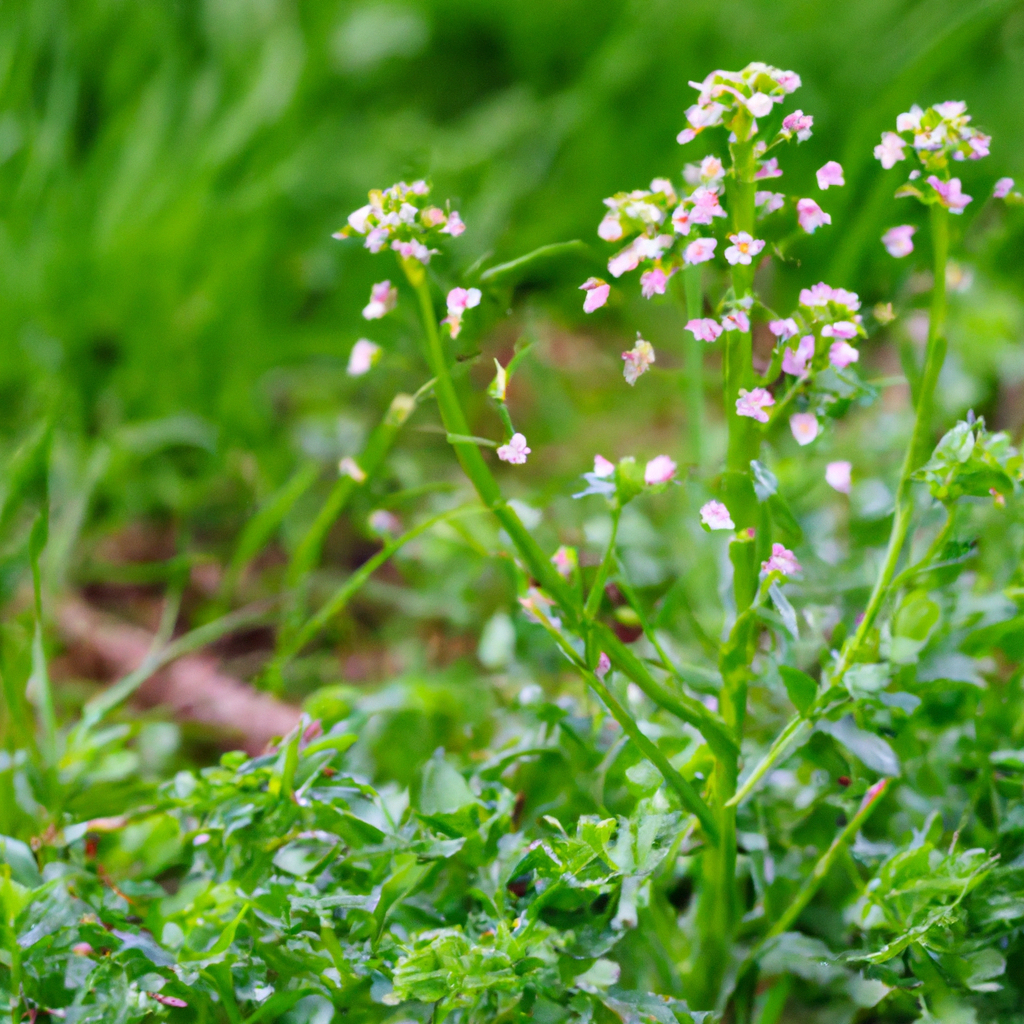Biological Name:
Thlaspi perfoliatum (Perfoliate-Pennycress)
Natural Habitat:
Perfoliate Pennycress: This plant is native to North America and can be found in a variety of habitats including fields, meadows, and roadsides.
Description:
Perfoliate pennycress is a type of flowering plant that is commonly found in fields and other grassy areas. It is a member of the Brassicaceae family which also includes plants such as mustard and cabbage. Perfoliate pennycress is an annual or biennial plant that produces small white or yellow flowers and clusters of seeds. The plant is often used as a cover crop to improve soil health and suppress weeds. It is also known for its ability to tolerate a wide range of growing conditions including wet or dry soils. In some areas perfoliate pennycress is considered a weed because of its ability to invade cultivated areas and cause allergies and other health problems.
Frequently Asked Questions (FAQs)
Q: What is pennycress good for?
A: The seeds of field pennycress are oil-rich (>30%) and contain specific fatty acids that can be used for select purposes such as healthy edible oils, biodegradable plastic packaging materials, lubricants, and biofuels.
Source
Q: Is field pennycress toxic to cows?
A: If eaten by cattle, field pennycress can produce an off taste in meat and milk products, and can cause poisoning of cattle and pigs if eaten in large quantities, from increased sensitivity of skin to sun exposure to mild digestive issues to colic and abortion.
Source
Q: Is field pennycress toxic to horses?
A: Toxic components All parts of T. arvense contain varying levels of glucosinolates, which can be toxic if consumed in large quantities. The amount of this chemical varies with the stage of maturity of the plant; the highest amount is in the seeds.
Source
Q: Is pennycress garlic edible?
A: Edible Parts They can be added in small quantities to salads and other foods such as in lasagna. They can also be cooked in soups or used as a potherb. For a leaf, it is very rich in protein. The seed is ground into a powder and used as a mustard substitute.
Source
Q: Is pennycress a mustard?
A: Pennycress is a small mustard, no more than 10 inches tall. Small white flowers form clusters along branches. The plant makes flat seed pods that can be carried by the wind. This plant is a nonnative mustard, but it does not pose a threat to native wildflower communities.
Source
Q: How do you control pennycress?
A: Field pennycress can be easily controlled mechanically with tillage or with herbicides. Herbicide treatments will provide best control when plants are in the early stages of development, preferably in the rosette stage when growth is active and before plants start shedding seed.
Source
Q: Are pennycress flowers edible?
A: Is Field Pennycress Edible? You can eat it, but it doesn’t taste very good. Seriously, like most wild greens in the mustard family, it has a very pronounced flavor. The bigger the plants get, the stronger the flavor, and once they’ve bloomed, you’d have to be really hungry.
Source
Q: Is pennycress an annual or perennial?
A: Field Pennycress is an annual weed in the mustard family. It is native to Eurasia and is found in fields, along roadways and other disturbed areas. Its preference is for poor soils with some moisture in full sun but is tolerant of various conditions.
Source
Q: Where is pennycress native to?
A: Thlaspi arvense, known by the common name field pennycress, is a flowering plant in the cabbage family Brassicaceae. It is native to Eurasia, and is a common weed throughout much of North America and its home.
Source
Q: Does pennycress need light to germinate?
A: Light and scarification of the seed coats improve germination. Some seeds, however, can germinate in darkness.
Source
Q: What does pennycress taste like?
A: This plant is sometimes cultivated as a food crop in Europe. The leaves of field pennycress are edible raw or cooked, with a bitter mustard-garlic-onion taste that can be removed by parboiling. They are best harvested before the plant begins to flower.
Source
Q: Is pennycress toxic to horses?
A: Toxic components All parts of T. arvense contain varying levels of glucosinolates, which can be toxic if consumed in large quantities. The amount of this chemical varies with the stage of maturity of the plant; the highest amount is in the seeds.
Source
Q: Do bees like pennycress?
A: Pennycress’ small, open-type flowers with easily accessible nectar droplets suggest that it is visited by generalist pollinators, which is indeed what has been recently reported [11, 25]. The primary visitors to pennycress flowers include small bees, flies, and butterflies [11, 25].
Source
Q: Is field pennycress invasive?
A: Field penny-cress is an alien (non-native) invasive plant, meaning it out-competes crowds-out and displaces beneficial native plants that have been naturally growing in Ireland for centuries.
Source
Q: What herbicide kills field pennycress?
A: Certainty Herbicide – 1.25 oz.
Source
Q: Can you eat field pennycress?
A: Is Field Pennycress Edible? You can eat it, but it doesn’t taste very good. Seriously, like most wild greens in the mustard family, it has a very pronounced flavor. The bigger the plants get, the stronger the flavor, and once they’ve bloomed, you’d have to be really hungry.
Source

